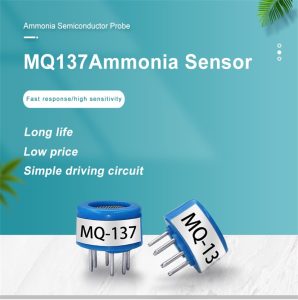Air pollution has become a significant global concern, adversely impacting human health, the environment, and quality of life. With the rise in industrialization, urbanization, and transportation, monitoring air quality has become essential to understand pollution sources, assess their impacts, and implement effective mitigation strategies. In recent years, advancements in gas sensor technology have revolutionized air quality monitoring, enabling more accurate, real-time, and widespread data collection. This article explores the key advancements in gas sensor technology and their role in enhancing air quality monitoring.

Understanding Air Pollution and its Impacts :
Before discussing advancements in gas sensor technology, it is crucial to understand air pollution and its impacts. Air pollution refers to the presence of harmful substances in the atmosphere, including gases, particulate matter, and volatile organic compounds (VOCs). These pollutants are emitted from various sources such as industrial processes, vehicle emissions, fossil fuel combustion, and natural events like wildfires. Prolonged exposure to air pollution can lead to respiratory diseases, cardiovascular problems, and even premature death. Monitoring air quality helps identify pollution sources, assess their impacts, and develop effective strategies to reduce pollution levels and protect public health.
Advancements in Gas Sensor Technology :
a. Miniaturization and Portability: One of the key advancements in gas sensor technology is miniaturization, making sensors smaller, lighter, and more portable. Miniaturized gas sensors are now integrated into wearable devices, mobile apps, and handheld devices, enabling personal air quality monitoring. This allows individuals to monitor the air quality around them in real-time and make informed decisions to minimize exposure to pollutants.
b. Selectivity and Sensitivity: Gas sensors now exhibit enhanced selectivity and sensitivity, enabling them to detect and differentiate specific gases and pollutants accurately. Selective gas sensors can detect specific gases of interest, such as nitrogen dioxide (NO2), ozone (O3), carbon monoxide (CO), or volatile organic compounds (VOCs). Improved sensitivity ensures that even low concentrations of pollutants can be detected, providing a more accurate assessment of air quality.
c. Smart Sensor Networks: Advancements in gas sensor technology have facilitated the development of smart sensor networks for comprehensive and extensive air quality monitoring. These networks consist of multiple sensors strategically placed across different locations, providing a comprehensive spatial coverage of air pollution levels. The collected data is then aggregated, analyzed, and visualized to generate real-time air quality maps, heat maps, and predictive models.
d. Internet of Things (IoT) Integration: Gas sensors are now integrated with IoT platforms, enabling seamless data collection, transmission, and analysis. IoT integration allows for remote monitoring and management of gas sensors, facilitating real-time monitoring of air quality in different regions. Additionally, IoT-connected gas sensors enable rapid response systems, triggering alerts and notifications when pollution levels exceed predefined thresholds.
e. Data Analytics and Artificial Intelligence: The vast amount of data collected by gas sensors requires sophisticated data analytics techniques. Artificial intelligence (AI) algorithms, such as machine learning and pattern recognition, are now used to analyze air quality data and identify pollution patterns. This enables predictive modeling, early warning systems, and data-driven decision-making for effective air pollution control strategies.
Applications and Benefits :
a. Urban Planning: Accurate air quality monitoring using advanced gas sensors supports urban planners in developing sustainable cities. Real-time data on pollution hotspots helps identify areas requiring pollution mitigation measures, optimize transportation routes, and design green spaces for better air quality.
b. Health and Public Awareness: Gas sensors provide individuals with real-time information about the air quality in their vicinity, empowering them to make informed decisions to protect their health. Additionally, aggregated air quality data can be disseminated to the public through apps, websites, and public announcements, raising awareness about air pollution and its health impacts.

c. Environmental Monitoring:
Gas sensors contribute to environmental monitoring by helping detect pollutant sources and assessing their impacts on ecosystems. This information aids in formulating targeted environmental protection policies and measures.
d. Regulatory Compliance: Governments and regulatory bodies can utilize gas sensor data to monitor compliance with air quality standards and regulations. By identifying sources of pollution and assessing
 : +86 155 8830 2704
: +86 155 8830 2704 : jxdziot@gmail.com
: jxdziot@gmail.com
